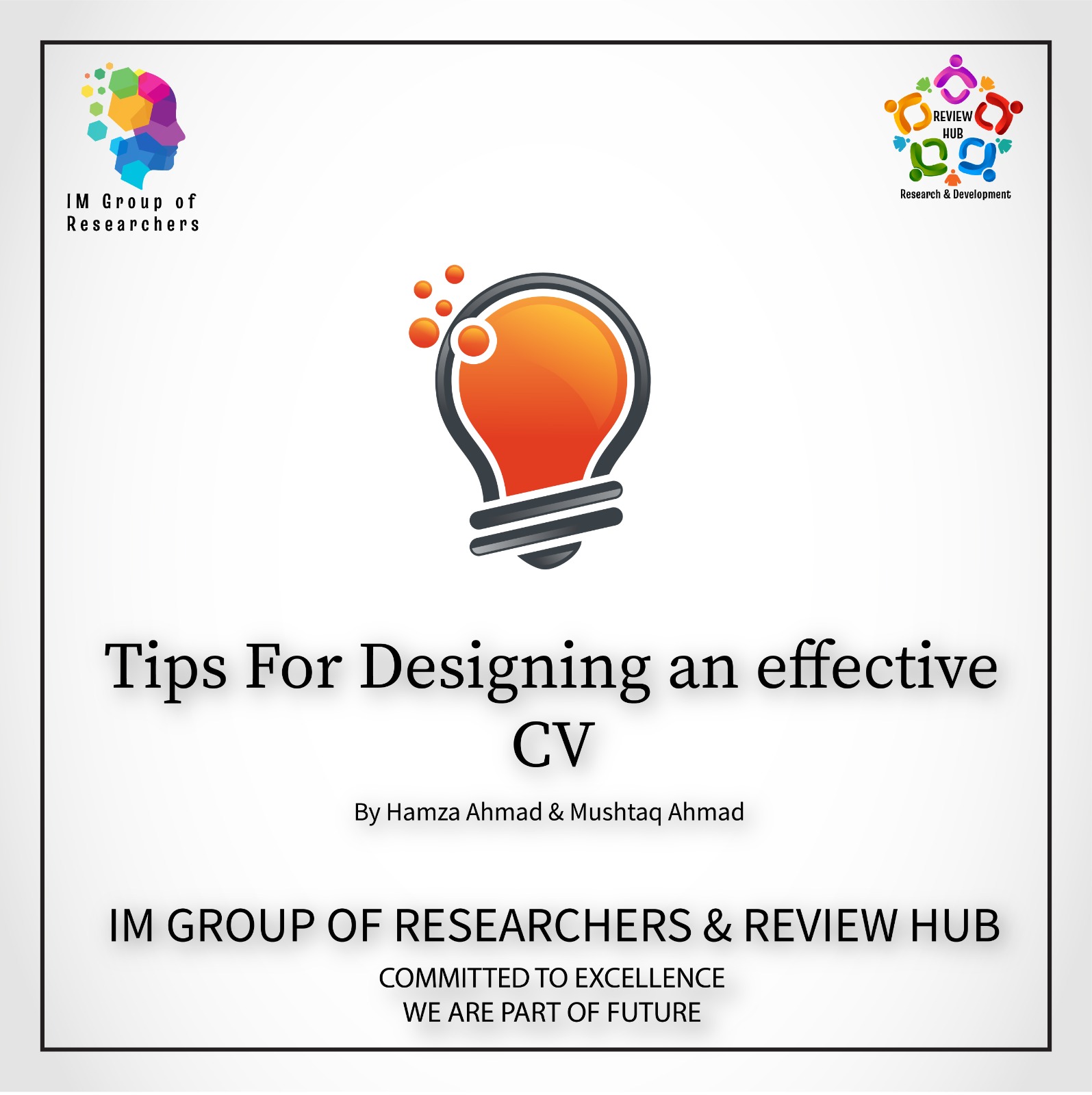14 Tips For Designing an effective CV
Here are some recommendations to design an effective CV. These are the stages to writing an AWESOME CV for your graduate school applications. Follow our 14 Tips For Designing an effective CV:
Authors:
1- Mushtaq Ahmad

LinkedIn: Click here to see Mushtaq Ahmad‘s profile
1. What Does CV stand for?
CV stands for “Curriculum Vitae,” which signifies your life’s history. You can include information about your educational qualifications on your resume.
-interests in research
-experiences in research
-conferences/workshops
-awards and scholarships -professional and extracurricular experience
Note: Observe the prescribed order and prepare a Europass CV. YouTube can assist with this.
2. Difference Between CV and Resume:
A CV is a lengthier document than a resume because a resume is a concise summary of your relevant skills and experiences. The typical length of a curriculum vitae is two to two and a half pages, though this may vary based on your academic background.
3. Prioritize your data on CV:
Since you are applying for a scholarship, you should emphasize on your academic achievements first and extracurricular experience second.
4. Structured Sections:
Write your experiences in reverse chronological order, starting with the most recent.
Organize your CV into clearly defined sections such as “Summary,” “Education,” “Work Experience,” “Skills,” “Achievements,” “Projects,” and “References.” Use headings and bullet points for easy readability.
5. Adding Auxiliaries to your CV:
Have a blog or website that demonstrates your potential? Add it below your contact information at the beginning of the CV.
6. Balancing the data in CV:
For clarification, you can divide your research experience into undergraduate and graduate sections (if you have a Master’s degree).
7. Documented Proofs requirement:
Mention nothing in your resume that you cannot prove (via certificates/recommendation letters or any other official document).
If you wish to mention a lecture to which you were invited, ensure you have a copy of the invitation email.
8. Formatting your CV design:
Always make your CV simple to read by using black-and-white format. The addition of too many colors detracts from the actual content of the CV.
You may use bold, italics, and underlining to draw attention (but be consistent in their use throughout the document).
Use a clean and professional layout with consistent fonts and formatting. Choose a readable font like Arial or Times New Roman, and keep the text size between 10 and 12 points.
9. 20-second rule to evaluate your CV:
Use the 20-second rule to evaluate your CV/Resume. Give your resume to your colleagues, family, etc. and ask them to tell you after 20 seconds what they remembered the most. Well done if they are able to identify your main strengths. If not, you will need to redesign your CV in a very brief period of time to make it memorable
10. Numbering the Pages in CV:
Always number your CV pages like “1-3, 2-3, 3-3”. This will help them determine if a CV page is missing! Never neglect to add up these numbers!
11. Adding observational skills in your CV:
Add observational skills to your technical abilities. Write about what you learned from a counselling session or experimental technique through simple observation, for instance. This will help you become a more astute or keen observer. It is crucial to highlight these observational skills, which many individuals fail to do. Ultimately, humans learn through both doing and observing:)
12. Adding your Publications in your CV:
Do you have any articles that are currently being reviewed or that you are still working on? Feel free to submit them to the “Manuscripts under review” and “Manuscripts in preparation” sections. If you have published papers, don’t neglect to include a link to them!
13. Establishing a Researcher Profile in your CV:
Establish a ResearchGate, Google Scholar, LinkedIn, WeChat, and Skype account. It is advisable to have this ID to demonstrate familiarity with academic research trends and commitment to your identity as a researcher!
14. Contact Information:
Include your full name, phone number, professional email address, and LinkedIn profile (if applicable). Make sure your contact information is up-to-date.
Also read: Crafting the Perfect CV: Tips, Templates, and Samples
Follow us on Facebook – Click Below

